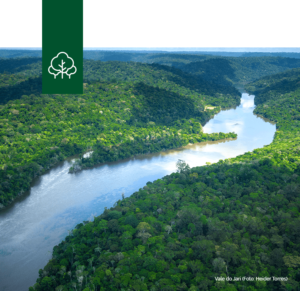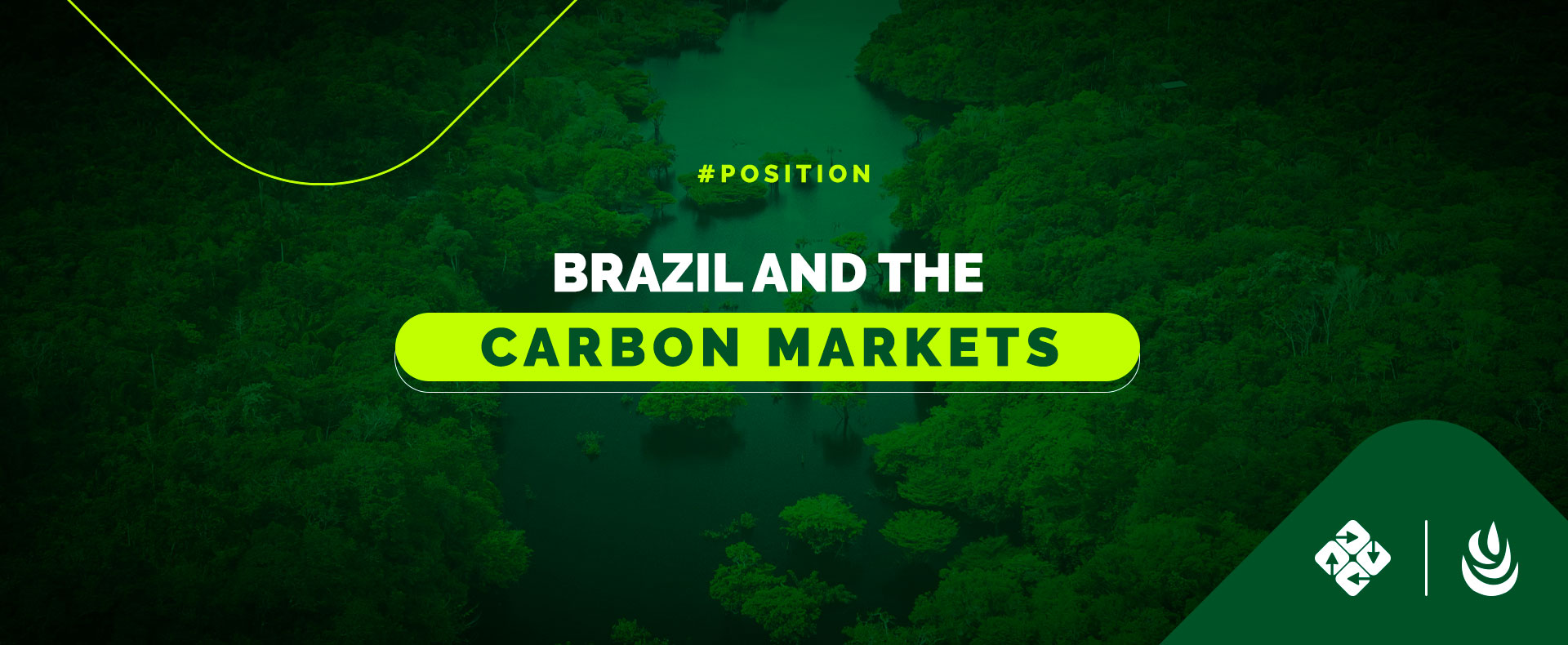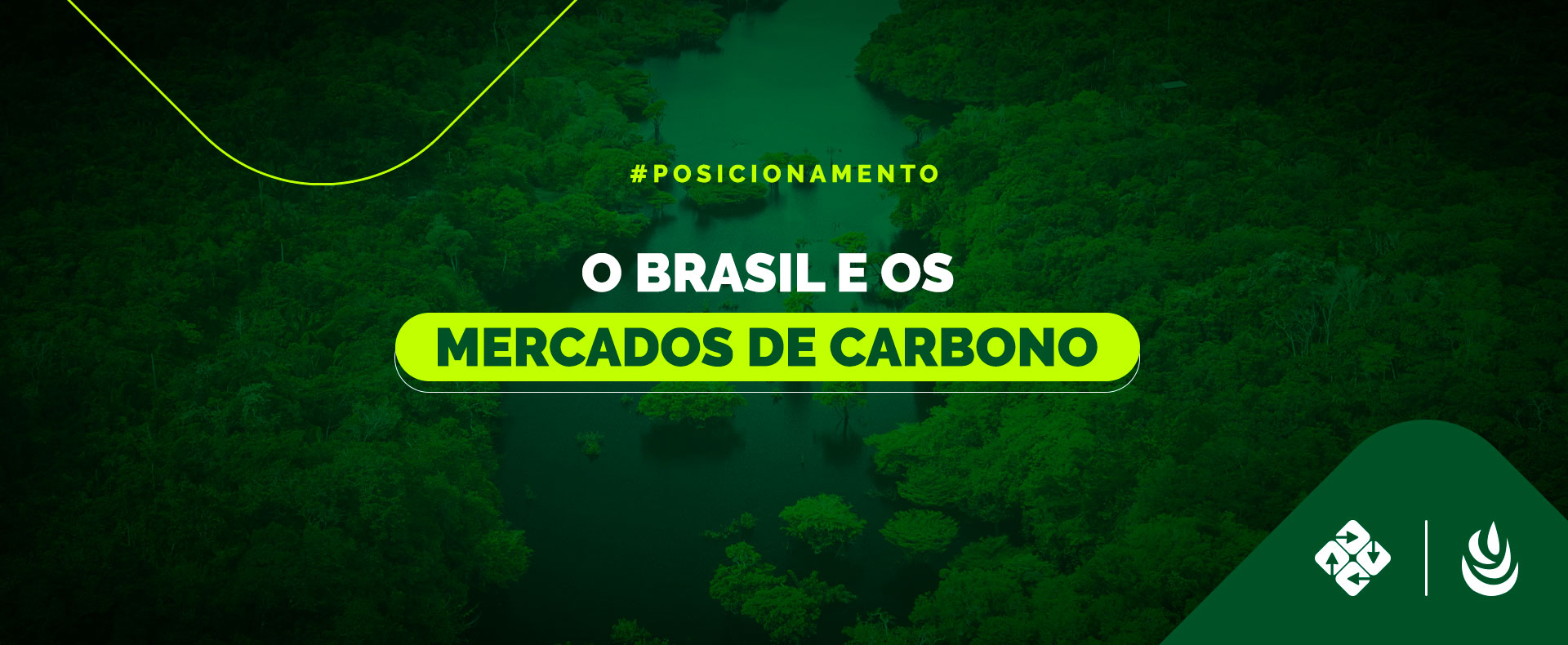Brazil and the carbon markets
The Federal Government of Brazil recently announced a series of decrees which will support the development of green investments and the reduction of greenhouse gas emissions. In particular, the decrees (Ie. 11,075) will establish a long awaited National System for Reducing Greenhouse Gas Emissions (SINARE) to support the country’s journey to decarbonization. Over the course of the next decade, Brazil’s voluntary carbon market is predicted to grow up to 20 times and has the potential to help different actors achieve their mitigation goals – but the the new decrees will need to overcome a series of technical issues as well as legal gaps in order for any potential benefits to come to fruition.

This article first appeared on Biofilica
15 June 2022 | A new Federal decree puts Brazil on route to capture an important share of the voluntary carbon market that is expected to grow at least tenfold by 2030¹ and helps to understand the executive branch’s strategy of what may turn out to be a Brazilian ETS².

In a pompous event held at the Botanical Garden in Rio de Janeiro and attended by the President, his Ministers of Economy, Environment, Foreign Affairs, Mines and Energy, with the presidents of the Central Bank, Bank of Brazil, Petrobrás, as well as dozens of CEOs and entrepreneurs of companies linked to the energy sectors, agriculture and environmental markets, the Federal Government announced a series of measures to increase Brazilian competitiveness in businesses related to decarbonization and so-called Green Investments. Undoubtedly, the most important was Decree 11,075, which established procedures for sectoral agreements for greenhouse gas (GHG) mitigation, in addition to establishing the National System for Reducing Greenhouse Gas Emissions, entitled SINARE.
A 13-year long journey
The legal basis of the decree dates back to 2009, when the National Climate Change Policy (PNMC, in Portuguese) was established by law. It is in the PNMC that the idea of sectoral agreements for GHG mitigation originates, targeting, for example, the energy, agriculture and transport sectors; it also introduced the concept of the Brazilian Market for Emission Reduction, a green and yellow ETS.
Unfortunately, after 13 years of the PNMC, we have not yet established sectoral plans and it was only until recently that we begun to see significant advances in the business environment for the development of voluntary carbon markets in Brazil, with the establishment of the Forest + Carbon Program (2020), and the National Payment Policy for Environmental Services (law 14,119) of 2021.
This pro-market direction is essential for Brazil to capture a share consistent with our competitive advantages, bringing here, via carbon markets, a necessary financing for a decarbonization route, especially in activities related to land use such as within agriculture and forest management.
This decree is only the long-awaited kick-start, as there is still a long regulatory path to address complex technical issues and legal gaps that still need to be clarified, such as the legal nature of the carbon credits, and adopted, such as the Socio-Environmental Safeguards for registration in the SINARE. Some market analysts and lawyers linked to the topic suggest that some of these gaps should be filled in the form of law, currently debated in Congress under law proposal 528/21³. Such complementary initiatives should be followed in parallel with other pricing mechanisms established by law, a fact widely recognized in Article 6 the Paris Agreement.
In any case, it is evident that the political signal of the path chosen by Brazil in relation to the financing of activities related to decarbonization, is one of more markets and less taxes. This approach is also in line with the recently published World Bank carbon pricing report, which shows that worldwide in 2021, the collected total via a carbon market was around US$ 56 billion, while in tax regimes the amount stood at US$ 28 billion. Emphasizing that in the case of markets, this is only the value of primary transactions (purchase of allowances4 + first sale in the voluntary market), that is, it does not include the secondary market that is estimated to be in the magnitude of US$ 754 billion.
What does the voluntary market have to do with all this?
The voluntary carbon market serves to increase the climate ambition of various actors, such as companies committed to Net Zero paths, while financing activities that are not yet financially viable, such as forest restoration and conservation. Numerous market analyses and reports5 indicate a growth between 15 and 20 times in the next 10 years. McKinsey estimates a market value of around $50 billion by 2030. Last year alone, more than 110 GHG sequestration and reduction initiatives funded by this market were launched only in Verra’s Verified Carbon Standard (VCS).
Seeking a slice of this global funding cake is the obligation of any government that is seriously committed to sustainable development in Brazil. In this sense, instituting SINARE, observed by the need to define Social and Environmental Safeguards, represents a major advance and deserves to be celebrated. This mechanism has been a longstanding demand by project developers, including Biofílica. The expectation is that this central and digital registry will serve as a kind of “filter”, allowing only the registration of high integrity, socio-environmentally sound programs and projects, with real climatic benefits. This only strengthens the quality of “Made in Brazil” credits and makes us even more competitive to receive financing via carbon markets. Export.
It is also possible to imagine that within a five-year horizon, credits registered within the SINARE can access demand from regulated companies in Brazil that will need to achieve their sectoral goals. Domestic sale.
Portuguese version see below:
Decreto do Governo Federal coloca o Brasil na rota de capturar uma importante fatia do mercado voluntário de carbono que deve crescer pelo menos dez vezes até 2030¹ e ajuda a entender a estratégia do executivo do que pode vir a ser um ETS² Brasileiro.

Em um evento pomposo realizado no Jardim Botânico do Rio de Janeiro e que contou com a presença do presidente da República, seus ministros da Economia, Meio Ambiente, Relações Exteriores, Minas e Energia, com os presidentes do Banco Central, do Banco do Brasil, da Petrobrás, além de dezenas de CEOs e Empreendedores de empresas ligadas aos setores de energia, agropecuária e mercados ambientais, o Governo Federal anunciou uma série de medidas para aumentar a competitividade brasileira em negócios ligados à Descarbonização e aos chamados Investimentos Verdes. Sem dúvida, o mais importante foi o decreto 11.075 que estabelece procedimentos para acordos setoriais de mitigação de Gases de Efeito Estufa (GEE), além de instituir o Sistema Nacional de Redução de Emissões de Gases de Efeito Estufa, intitulado de SINARE.
13 anos de trajetória
A base jurídica do decreto é de 2009, quando foi estabelecida por lei a Política Nacional de Mudança do Clima (PNMC). É na PNMC que surge a ideia dos acordos setoriais para mitigação de GEE, incluindo por exemplo os setores de energia, de agricultura e transporte; além de introduzir o conceito do Mercado Brasileiro de Redução de Emissões, o ETS verde e amarelo.
Infelizmente já passados 13 anos da PNMC ainda não temos estabelecido os planos setoriais e muito recentemente começamos a ver avanços expressivos nas condições de negócios (“business environment”) para o desenvolvimento dos mercados voluntários de carbono no país, com o estabelecimento do Programa Floresta+ Carbono (2020), e da Política Nacional de Pagamento por Serviços Ambientais (lei 14.119) de 2021.
Esse direcionamento pró mercado é essencial para que o Brasil possa capturar uma fatia condizente com nossas vantagens competitivas, trazendo para cá, via mercados de carbono, financiamento mais do que necessário para uma rota de descarbonização, principalmente em atividades ligadas ao uso da terra como agropecuária e florestas.
Esse decreto é apenas o tão esperado pontapé inicial, afinal resta ainda um longo caminho regulatório para endereçar questões técnicas complexas e lacunas jurídicas que ainda precisam ser esclarecidas, como da própria natureza jurídica dos créditos, e adotadas, como por exemplo as Salvaguardas Socioambientais para registro no SINARE. Alguns analistas de mercado e advogados ligados ao tema sugerem que parte dessas lacunas deveriam ser preenchidas em formato de Lei, hoje debatidas no Congresso sob o PL 528/213.Iniciativas complementares que devem seguir em paralelo a outros mecanismos de precificação estabelecidos por Lei, fato amplamente reconhecido no artigo 6 do Acordo de Paris.
De qualquer maneira fica evidente a sinalização política do caminho escolhido pelo país em relação ao financiamento de atividades ligadas à descarbonização, mais mercados e menos impostos. Muito em linha com o recém-publicado relatório do Banco Mundial sobre Precificação de Carbono, que mostra que mundialmente em 2021 o total arrecadado via mercado de carbono foi da ordem de US$ 56 bi, enquanto nos regimes de impostos (tax) o valor ficou em US$ 28 bi. Enfatizando que no caso dos mercados, esse é apenas o valor das transações primárias (compra de allowances4+ primeira venda no Voluntário), ou seja, não inclui o mercado secundário que pode ser na ordem de US$ 754 bi.
E o mercado voluntário com isso?
O mercado voluntário de carbono serve para aumentar a ambição climática de diversos atores, como empresas comprometidas com o Net Zero, e ao mesmo tempo financiar atividades ainda sem viabilidade financeira, como restauração e conservação florestal. Inúmeras análises e reportes de mercado5 indicam um crescimento entre 15 à 20 vezes nos próximos 10 anos. A Mckinsey estima um valor de mercado da ordem de US$ 50 bi em 2030. Só no ano passado, foram lançadas mais de 110 iniciativas de sequestro e redução de GEE financiadas por esse mercado somente no padrão Verified Carbon Standard (VCS) do Verra.
Buscar uma fatia desse bolo global de financiamento é obrigação de qualquer governo comprometido seriamente com o desenvolvimento sustentável no Brasil. Nesse sentido, a instituição do SINARE, observada à necessidade da definição de Salvaguardas Socioambientais, é um grande avanço, pleito antigo das empresas desenvolvedoras de projetos como a Biofílica, e merece ser celebrado. A expectativa é que essa central única e digital sirva como uma espécie de “filtro”, permitindo somente o registro de programas e projetos socioambientalmente íntegros, com benefícios climáticos reais. Isso só fortalece os créditos “Made in Brazil” e nos deixa ainda mais competitivos para receber financiamento via mercados de carbono. Exportação.
É também possível imaginar que em um horizonte de cinco anos os créditos registrados dentro do Sinare possam acessar demanda de empresas reguladas no Brasil que precisarão atingir suas metas setoriais. Venda doméstica.
Please see our Reprint Guidelines for details on republishing our articles.

